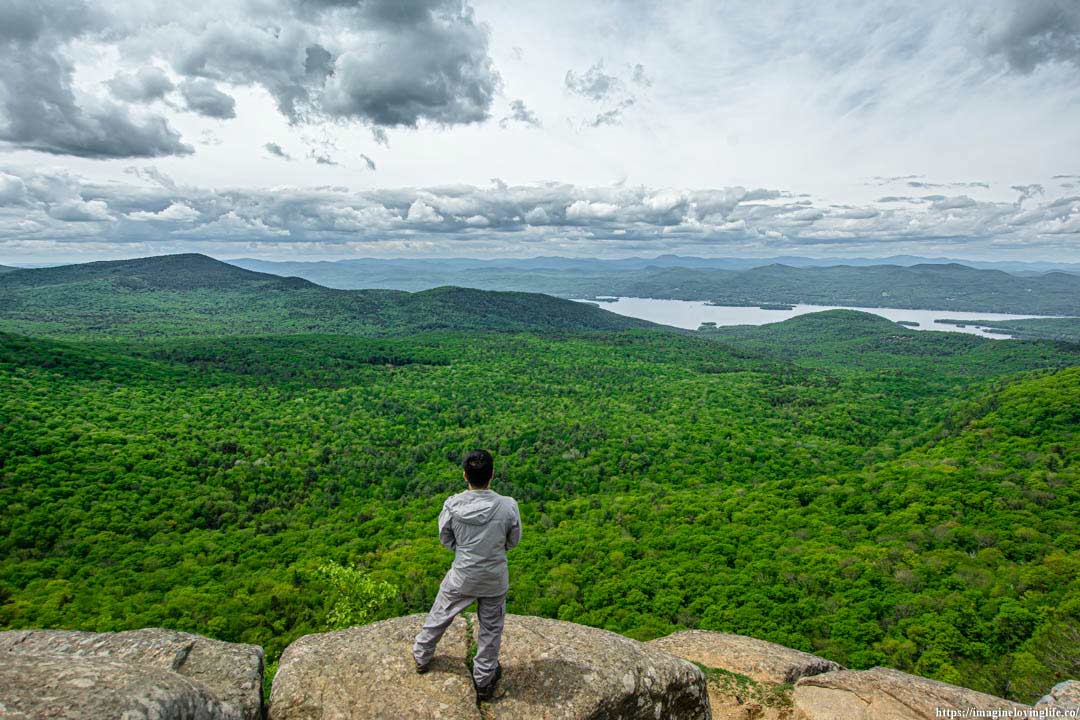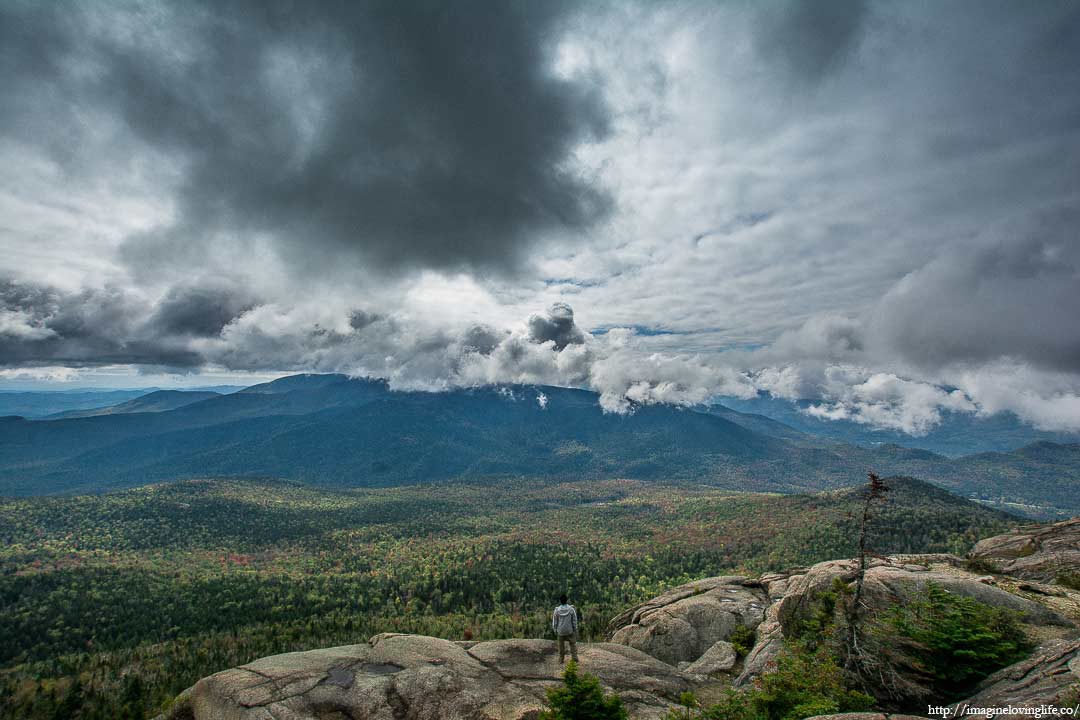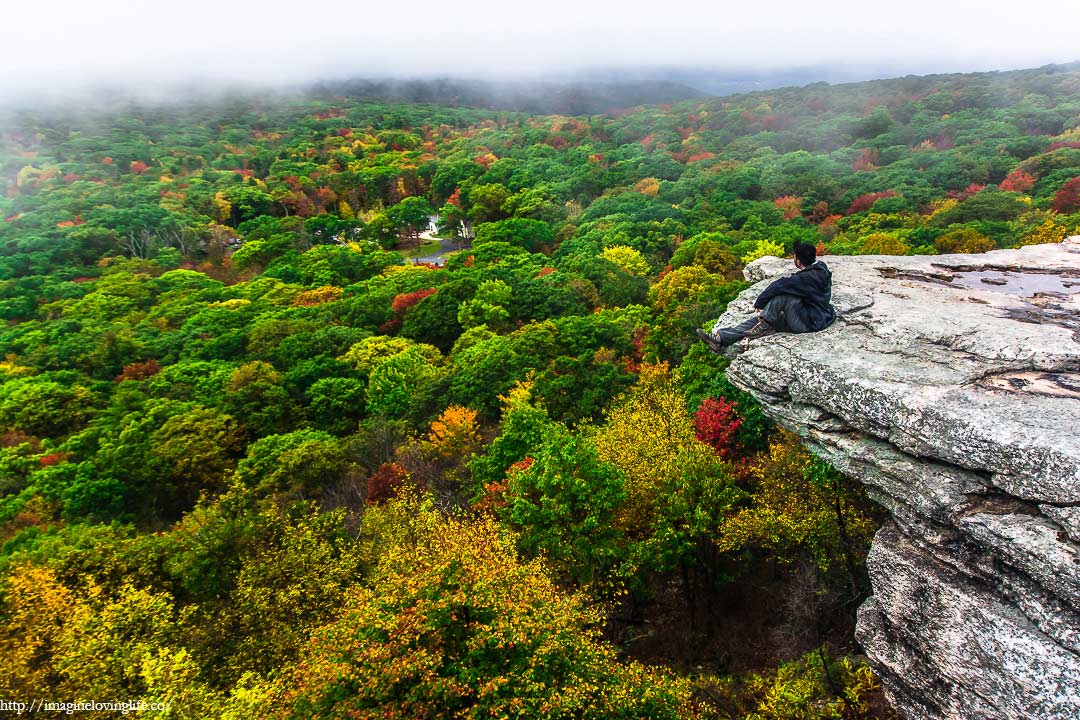
Your rain jacket is one of the most important hiking gear that you are going to get. A jacket will be able to protect your torso from the rain, storm, and wind. A jacket can keep you dry and comfortable while hiking. Even if the weather is very rainy, your body will be very comfortable if you have a pretty good rain jacket. However, if you have a terrible rain jacket, you will end up soaking wet. You will be wet from either the rain or from your own body sweat. It is not very comfortable hiking when your body is very wet. Imagine hiking on a cool breezy September day with the sun out. You found out the you are sweating profusely and your body is drenching wet because the jacket is not very breathable. The sweat gets trapped with the skin rather than evaporated to the air. So having a good rain jacket is very important.
Understanding Different Types Of Protection
Waterproof
Waterproof means that the jacket will not let water from the environment or rain touch your skin. The only problem with this is that there isn’t really a standard way to test this. What I do is I put a water bottle and I use the jacket as a cap. Then I turn the water bottle upside down. I will tell you that even though lots of jackets claim to be waterproof, it is not the case. There are lots of jackets where water just flows through the fabric rather easily.
Water Resistant
Water resistant is not as good as waterproof. This often means that the jacket repels water but it cannot repel it for a very long time. Jackets that are water resistant are good for showers, light rain and light wind. These jackets are often lightweight and easy to carry. They are great for hikers that like to carry as little weight as possible. However, these jackets cannot handle a storm or a very hard downpour of rain.
Breathable
Breathable is something that you need to look for in terms of a rain jacket. Breathable allows the jacket to breathe or allows sweat to evaporate. This is a great feature if you are hiking. You want your sweat to evaporate and not stay under your clothes. Sweat can turn into horrible body odor if it does not evaporate properly. While most hikers would not care, keep in mind that most hikers go to restaurants after a long hike. Smelling good inside a restaurant would be ideal so that you do not bother the others guests with your smell.
Non-Breathable
Obviously, non-breathable jackets will often trap your sweat under your clothes. I have a couple of these in my gear actually. Non-breathable are often ponchos and similar types of clothing. They are very affordable and they work great in an open stadium if you are going to watch a baseball game or football game. They are not ideal for long hikes since they may protect you from the rain but you are still going to get very wet because of the sweat that have accumulated under this piece of clothing.
Windproof
A lot of jackets claim to be windproof. There are hardly any tests that is a standard when it comes to a jacket being windproof. So most companies claim that their jackets can withstand the wind. I often just trust very popular companies. If the company is pretty popular, I often think they will have a high standard on their jackets. If the company is pretty unknown, I will have doubts whether what they are claiming is true or not. I would definitely do more research if the jacket comes from a very unknown company.
Wind Resistant
I hardly see any wind resistant jackets. Most companies just claim that their jackets are windproof. I don’t think they will get any repercussions for doing this. So most companies do not even bother. They will just flat out say that their jackets are windproof. If the jacket is very lightweight, and maybe meant for emergencies only, then you should be a little bit doubtful. There are some pocket jackets that really offer very little protection. Some pocket rain gear are even disposable. I would do more research if the company is very unknown and you are going to a very windy trail or hike.

Outdoor Rain Jacket Protection Advancements And Tech
There are mainly two ways that a jacket is created to protect the user from rain and other types of weather. The fabric of the jacket can either be laminated or coated. The material of the jacket can be different and most companies do have different types of materials that they use for their jackets. However, companies still only use two ways to waterproof a jacket. These two ways are very effective and they work very well.
Coatings
Coatings are often smeared onto the fabric of the jacket and then cured. The waterproof quality of the jacket varies because of the varied thickness of the coating. Think of a bread and you smeared peanut butter onto it. The thickness of the peanut butter on the bread is not going to be even on all of the bread’s surface. It is for this reason that the waterproof quality of the jacket varies.
In terms of durability, coatings actually lasts for a very long time. You can wear the jacket every day and it will be very waterproof for years to come. The wear and tear of the coating slowly diminishes in time but it does not diminish rapidly. You still get a lot of value and usefulness out of jackets that are coated. Coatings do not degrade with washing and wear the same way the DWR (Durable Water Repellent) finish do. So you get a lot of years even though the jacket is very inexpensive compared to laminated jackets.
Since jackets that use coatings do not have a lot of layers, they are often very lightweight. They are great for weather that is not too cold or hot. Since they are not that heavy, hikers do not use a lot of energy when they bring one to a hike. So if you only do day hikes and do not plan on hiking in a storm then I suggest just get jackets that are coated. They are cheap, lightweight and they work well.
Lamination
Jackets that are laminated are often very good but very expensive at the same time. If you are going to get a jacket that is laminated, it is going to be very expensive. You should think about how you are going to use this jacket outside of hiking. You may use it to go hangout with your buddies, for work, to relax or go to a restaurant.
Think of laminate as two or more fabrics glued together. Laminated jackets provide the best type of protection against rain and the weather. The jacket will often consist of 2 to 3 layers. The outer layer will consist of materials that will protect and repel rain while the inner layer will be more comfortable and tear resistant. It is because the jacket is made out of multiple fabrics that laminated jackets offer more durability than coated jackets. This is also one of the main reasons why laminated jackets are often more expensive.
When it comes to breathability, laminated jackets also offer better performance than coated jackets. However, since laminated jackets use multiple fabrics, they also tend to be heavier than coated jackets. If you want to maximize the protection that you can get then I would definitely go with laminated jackets even though they will cost more. They will be more durable and give more protection against the weather.
3 Types Of Lamination
2 Layers
These types of jackets will often have a membrane or coating applied to the face fabric. This will be the first layer. The second layer is often made out of a sewn-in lining like mesh or nylon. This is stitched to the interior of the jacket. This second layer is used to protect the membrane, or coated face fabric from abrasion. Two layer jackets are often a little heavier and less breathable than the other designs. The jacket is often very flexible and it will often be cheaper than the 3 layer but cost more than the 2.5 layer.
2.5 Layers
The outer layer is made up of a very low weight face fabric. The middle layer is made out of a polyurethane-based Waterproof breathable laminate or coating. This will then prevent the water from reaching the body or inner layer of the jacket. The inner layer is a bare minimum protective layer (this is more like a sheen than an actual layer which is why it is considered half layer). The inner layer provides decent amount of abrasion resistance. Not as durable as the 2 layer though. This usually cost the lowest amount out of the 3 types of layers. This will often be very lightweight as well.
3 Layers
Surprisingly, 3 layers are often lighter than 2 layer jackets. There are no coatings used on a 3 layer jacket, just laminates. There will be a face fabric, a membrane that is waterproof, and an inner layer or liner that is abrasion resistant. This type of jacket offers the best performance and will keep the owner dryer than the other types of jackets. The price of this type of jacket is often the most expensive. This type of lamination also gives the jacket a lot of durability and breathability. This is the best type of jacket to have if you are planning on hiking while raining. This offers the best protection, durability, breathability and 3 layer jackets are also very lightweight. The only drawback is the price. These types of jackets are also very expensive.

Rain Jacket Features You Should Think About
Packable
One of the nicest features to have is if the jacket is packable. If it can be folded to a size where you can put it in your pocket is a nice feature. Most hikers are day hikers. They only hike for one day and usually only for around 8 miles or less. We cannot tell what the weather is going to be like at the summit or at the viewpoint. A jacket that is lightweight and packable are a good accessory to any day hiker. So one thing that you should look for is if the item is packable and lightweight. If it is, you can just stash it on your bag and not care about it for a very long time.
Vents
A lot of the jackets that you are going to see for the outdoors are breathable. This means that the jacket allows sweat to pass through the fabric already. We have come a long way in terms of our technological advancements on our jackets. However, there are lots of cases when we just sweat profusely or too much. If the hike is very strenuous, we may end up sweating a lot more than the jacket can handle. This is one of the main reasons why vents are very good. Ventilation is one of the things that we need to watch out for as well. These days, jackets have vents around the armpit. This allows the sweat from the body and armpit to evaporate. You can find outdoor jackets with zippers around the armpit. This is an amazing design that will allow you to evaporate your sweat rather well.
Drawstrings
Drawstrings are often very common on the hood of the jacket. This allows you to adjust the hood to your liking. Make it very fit to your head so that no water will be able to go to your hear. You can tighten up the hood of your jacket this way. This will provide more protection to your head and keep your head a lot dryer. Some jackets also have drawstrings on the wrists. You can tighten the wrists so that no water can go in there also. Some use Velcro rather than drawstrings. Keep in mind that your arm may end up feeling sticky and sweaty because sweat usually evaporates through the holes on the wrist part of the jacket. There are also adjustable drawstrings on the waist, and other parts of the jacket. It depends on the design.
Zippers
Waterproof jackets will often have laminated zippers or coated zippers. Ordinary zippers just cannot handle the rain. Water will leak into them and into the inner layers of your clothing. So most outdoor jackets will have coated zippers. The pockets of your jacket will also have coated zippers.
Pockets
There are a lot of jackets with different styles of pockets. Some have many pockets and some have very little. Pockets can add a little bit of weight to the jacket. Keep in mind that the pocket will have additional fabric and zippers. So if you want to hike with as little weight as possible, you will often go with the jacket without zippers and very few pockets. However, lots of pockets can come in handy. You don’t need to bring a backpack at all if you have lots of pockets. You can put a lot of your gear inside your jacket and you can even put a water bottle inside it.
References:
- https://www.lac-mac.com/mediafiles/catalogue/RainwearSelectionGuide.pdf
- https://www.gemplers.com/tech/rainwear-select.htm
- http://www.outdoorsfather.com/2015/05/waterproof-clothing-basics/
- https://www.ems.com/f/ea-how-to-choose-rainwear.html
- https://www.rei.com/learn/expert-advice/rainwear-how-it-works.html